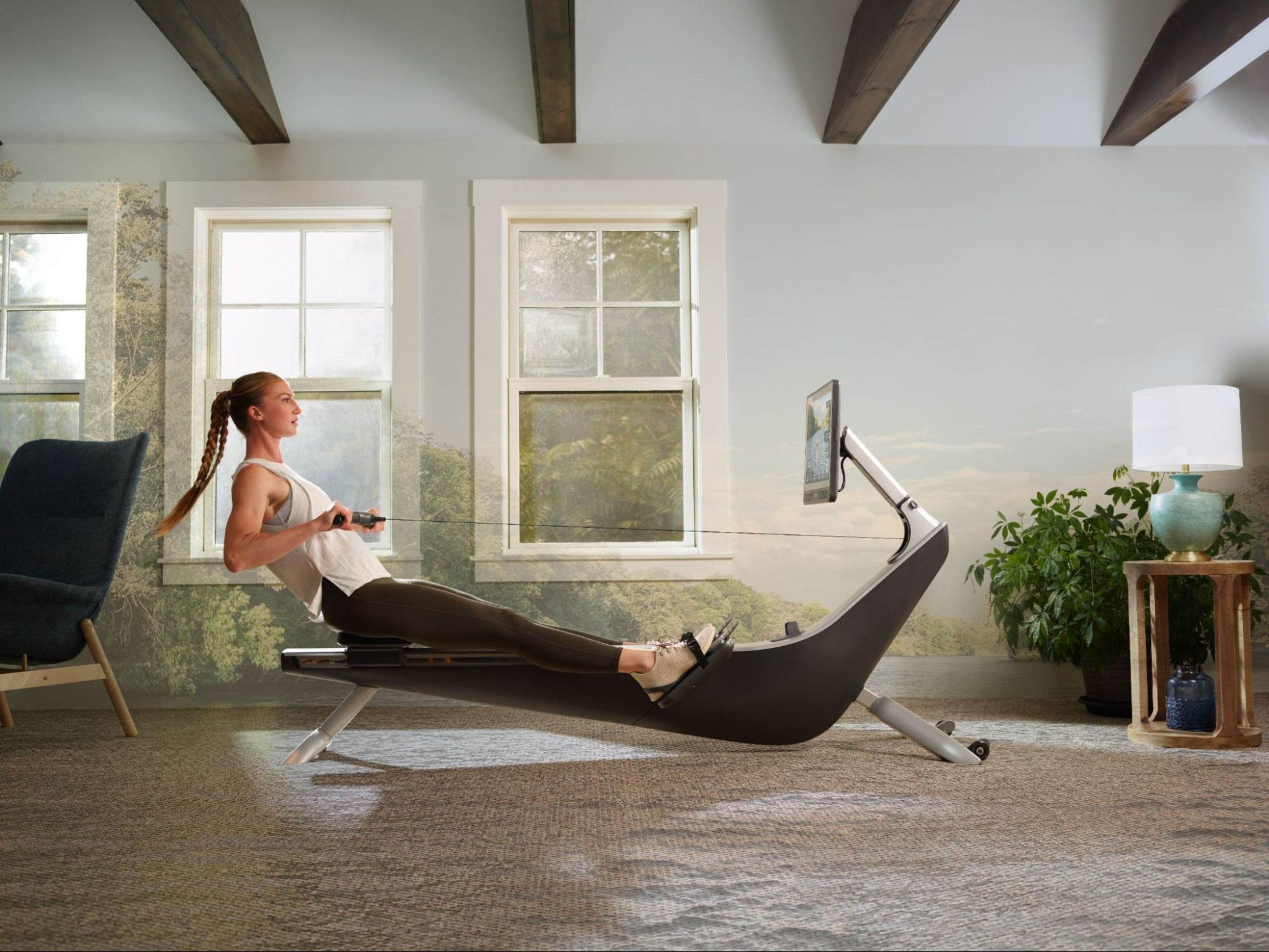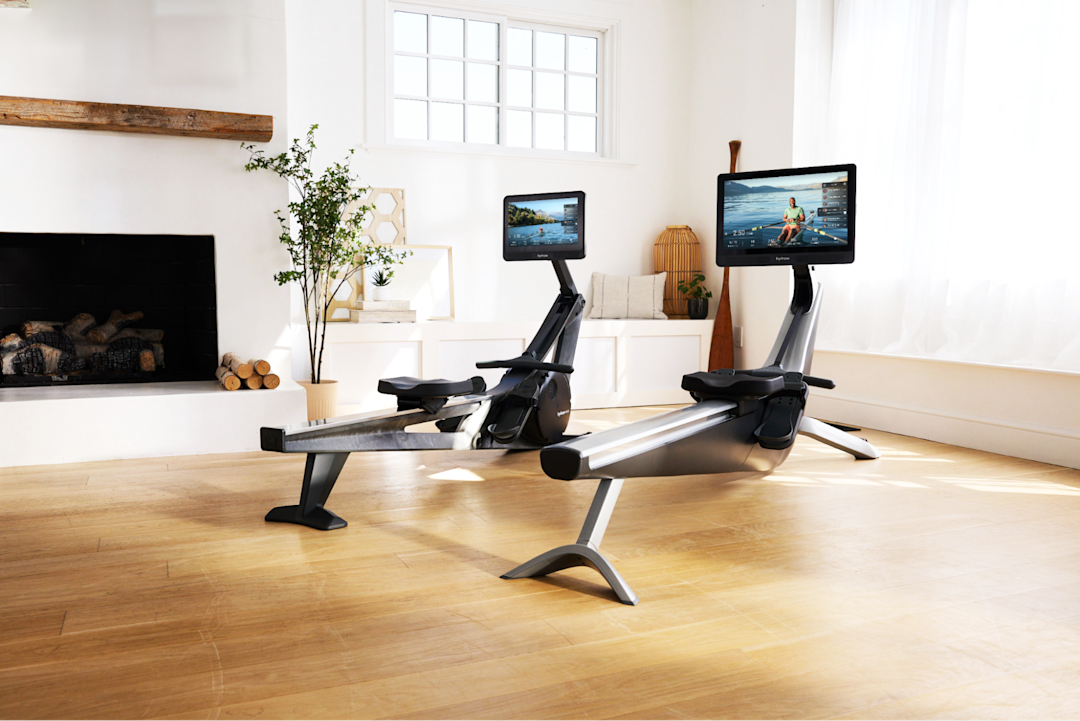Rowing Machine vs. Treadmill: Which Is Better for You?

When it comes to investing in a cardio machine for your home gym, rowing machines and treadmills are two popular pieces of equipment. These machines offer effective ways to improve your fitness level, burn calories, and enhance your overall health.
However, choosing between a rowing machine and a treadmill can be challenging, especially if you’re unsure which one suits your goals, experience, and preferences.
In this article, we will compare the benefits and features of rowing machines vs. treadmills, helping you to make an informed decision about which machine is better for you. Let's explore:
Key takeaways:
Rowing machines provide a full-body workout that engages approximately 86% of your muscles, offering efficient cardio and strength training in a compact, low-impact format. They are particularly beneficial for individuals seeking to minimize joint strain while maximizing calorie burn and muscle engagement.
In contrast, treadmills primarily target lower-body muscles and may be more suitable for those who enjoy running or walking and have no joint concerns.
Rowing machines vs. treadmills: An overview
Features | Rowing Machine | Treadmill |
Muscles worked | Full-body workout across upper-body, lower-body, and core muscles | Lower-body muscles only. |
Calories burned | 300 calories in 20 minutes | 300 calories per hour |
Impact on joints | Low-impact | High-impact |
Cardiovascular benefits | Great for cardio because they engage a larger muscle mass, increasing your heart rate and oxygen consumption. | Good for cardio because walking and running will increase your heart rate. |
Weight loss | Good at helping you burn fat with higher-intensity running sessions. | |
Storage and space | Smaller and more compact and can easily be folded and stored when not in use. | Tend to be larger and bulkier, taking up significant floor space. |
Variety and mental stimulation | Vary your workouts by adjusting your resistance levels and workout types. | Vary your workouts by adjusting your speed and incline. |
Monitoring and tracking progress | Built-in monitor will track time, distance, strokes per minute, split rate, heart rate, and calories burned. | Built-in monitor will track time, distance, speed, heart rate, and calories burned. |
Cost | Come in a range of prices depending on type of resistance system, construction quality, and subscription costs. | More expensive due to larger size and motorized functionality. |
Treadmill workouts: The basics
Treadmills are designed to replicate the experience of running or walking outdoors. With adjustable speed and incline settings, treadmills offer both versatility and convenience.
Workouts on treadmills can range from 20 to 60 minutes, depending on your fitness level and goals. Running on a treadmill primarily targets the muscles in your lower body, including the quadriceps, hamstrings, calves, and glutes.
Rowing machine workouts: The basics
Full-body engagement rowing machines, also known as ergometers or rowers, provide a full-body workout experience by simulating the action of rowing a boat on the water. Rowing workouts usually last between 20 and 45 minutes, incorporating both cardio and strength elements. Rowing engages multiple muscle groups, including the legs, core, back, shoulders, and arms.
The benefits of rowing machines vs. treadmills
If you’re considering whether a rowing machine or treadmill is right for your space and workout goals, there are several factors to consider, including:
Muscle building
Calorie burn
Impact on joints
Cardiovascular benefits
Weight loss
Storage and space considerations
Variety and mental stimulation
Monitoring and tracking progress
Cost considerations
Below, we’ll dive in more on each consideration so you’ll be able to better decide whether a treadmill or a rowing machine is right for you.
Rowing machine vs. treadmills: Muscle building
Treadmills primarily focus on lower-body muscles, helping to strengthen and tone the legs. The repetitive motion of running or walking on a treadmill can target and develop specific leg muscles.
Running on a treadmill can allow you to focus on proper form and proper lower-body muscle engagement/activation instead of challenges and distractions posed by running outside on crowded streets and uneven surfaces.
Rowing machines, on the other hand, provide a full-body workout, engaging both your upper- and lower-body muscles. The pushing and pulling motions involved in rowing work the legs, glutes, core, back, shoulders, and arms, resulting in more balanced muscle development.
Having a rowing machine in your home gym allows for perfect replication of the rowing stroke, which is super efficient for building muscle and sometimes harder to execute on the water with all the outdoor elements you have to work around.

Cardio and Strength, Combined
Burn calories and build muscle with a Hydrow rowing machine.
Rowing machines vs. treadmills: Calorie burn
Both rowing machines and treadmills offer effective calorie-burning workouts. The number of calories burned depends on factors such as workout intensity, duration, and individual body composition.
When comparing the calorie-burning benefits of treadmills vs. rowing machines, rowing machines do have the advantage, as they engage a larger muscle mass and require more energy expenditure overall. At a moderate level, you can burn over 300 calories in a 20-minute rowing machine workout.
Treadmills can also provide a significant calorie burn, ranging from 300 to 500 calories per hour depending on factors such as speed, incline, and body weight.
Related blog: Is Rowing Hard?
Treadmills vs. rowing machines: Impact on joints
Treadmill workouts are high-impact exercises that can put stress on your joints, especially knees and ankles. The repetitive impact of running or walking on a treadmill can lead to joint discomfort, pain, or injuries, particularly if you’re not maintaining proper form or wearing appropriate footwear.
Rowing machines, on the other hand, provide a low-impact workout, offering a smooth gliding motion that reduces strain on your joints. The seated position and fluid rowing motion both minimize the risk of joint impact, making rowing a suitable option if you’re dealing with joint pain, arthritis, or other injuries. Rowing can also improve bone density and help prevent osteoporosis as you get older.
Rowing machines vs. treadmills: Cardiovascular benefits
Both rowing machines and treadmills provide excellent cardiovascular benefits, improving heart health and lung capacity.
Treadmills offer a straightforward cardiovascular workout, allowing you to control your speed, incline, and intensity to match your fitness level. Running or brisk walking on a treadmill increases your heart rate and enhances your cardiovascular endurance.
Again, because rowing machines engage a larger muscle mass, they offer a unique advantage for increasing your heart rate and oxygen consumption. The rowing motion requires coordinated effort from both the upper and lower body, resulting in a higher cardiovascular demand.
Rowing workouts elevate your heart rate, improve cardiovascular endurance, and promote efficient oxygen utilization. Rowing is a much more full-body workout, incorporating elements of both cardiovascular and strength training.
Treadmill vs. rowing machine: Weight loss
Both rowing machines and treadmills can help contribute to weight loss because you burn fat when combined with a healthy diet. If you want to lose weight, the key ultimately lies in creating a calorie deficit, where you burn more calories than you consume.
Rowing machines may have a slight edge in aiding weight loss and burning fat due to their ability to engage more muscles that use more energy (calories). The combination of endurance and strength is an effective way to boost your metabolism and increase your calorie burn.
Treadmills also offer effective calorie burn, especially during high-intensity running sessions. Regular treadmill workouts can aid in weight loss by increasing your overall energy expenditure.
Rower machine vs. treadmill: Storage and space considerations
When you’re building your home gym, the type of equipment you choose can ultimately come down to the space you have to work with. Treadmills tend to be larger and bulkier than rowing machines and can take up significant floor space in your home.
Rowing machines are often more compact and can easily be folded and stored when not in use. Some models even have wheels for convenient transportation. This makes rowing machines a suitable choice for people with limited space or those looking for exercise equipment that can be easily stored.
Treadmills vs. rowing machines: Variety and mental stimulation
Treadmills offer the advantage of simulating outdoor running, allowing you to vary your workouts by adjusting your speed and incline. You can even incorporate pre-programmed workout routines. Depending on your circumstances, running on a treadmill can be a lot safer than running outside.
Rowing machines also offer variety through adjustable resistance levels and different rowing techniques. You can choose between steady-state rowing or interval training, and even join virtual rowing classes to keep your workouts diverse and challenging.

Experience the most immersive and efficient total-body workout with Hydrow.
Row machine v. treadmill: Monitoring and tracking progress
Both rowing machines and treadmills come with built-in monitors that track important workout data such as time, distance, speed, heart rate, and calories burned. These monitoring features allow you to track your progress, set goals, and stay motivated as you strive to improve your fitness levels.
Treadmill vs. rowing machine: Cost considerations
The cost of rowing machines and treadmills can vary depending on the brand, features, and quality.
Generally, treadmills tend to be more expensive due to their larger size and motorized functionality. Higher-end treadmills often offer advanced features such as interactive screens, built-in programs, and incline options.
Rowing machines come in a range of prices, from more affordable basic models to higher-end resistance machines with virtual classes, instructor-led classes, journeys of different bodies of water, and more. The cost can depend on the type of resistance system, construction quality, and additional features like a subscription.

Considering a Hydrow rowing machine? We tackle all your burning questions in our FAQ guide.
Treadmill vs. rowing machine: Final thoughts
In the end, choosing between a rowing machine and a treadmill depends on your individual goals, preferences, and circumstances. If you are primarily looking for a full-body workout that engages multiple muscle groups, a rowing machine is probably the better option. On the other hand, if you enjoy running and want to simulate outdoor training while focusing more on lower-body muscles, a treadmill can be a suitable choice.
When choosing your gym equipment, remember to consider factors such as muscle development, calorie burn, impact on joints, cardiovascular benefits, weight loss potential, storage and space consideration, efficiency and cost when making your decision. It’s also important to listen to your body and choose the machine that aligns with your fitness level, overall health, and goals.
Ultimately, both rowing machines and treadmills provide effective ways to stay active and improve your fitness. So, whether you’re rowing your way to strength or running towards endurance, incorporating either of these machines into your exercise routine can lead to significant health benefits.
If you're interested in investing in a rowing machine for home, be sure to check out Hydrow. Our state-of-the-art rowing machines are the perfect addition to any home gym, giving you an immersive and total-body workout in just 20 minutes a day.
Hydrow’s extensive library of workout content is led by our team of world-class and Olympic Athletes and filmed in stunning locations around the world. Whether you’re looking to do a rowing workout or cross-train with yoga, Pilates, and circuit training, you’ll be transported to gorgeous global destinations that keep you motivated to come back again and again.
Learn more about the benefits of a Hydrow rowing machine today!

Explore Hydrow
Learn more about how you can transform your fitness routine with a rowing machine.






